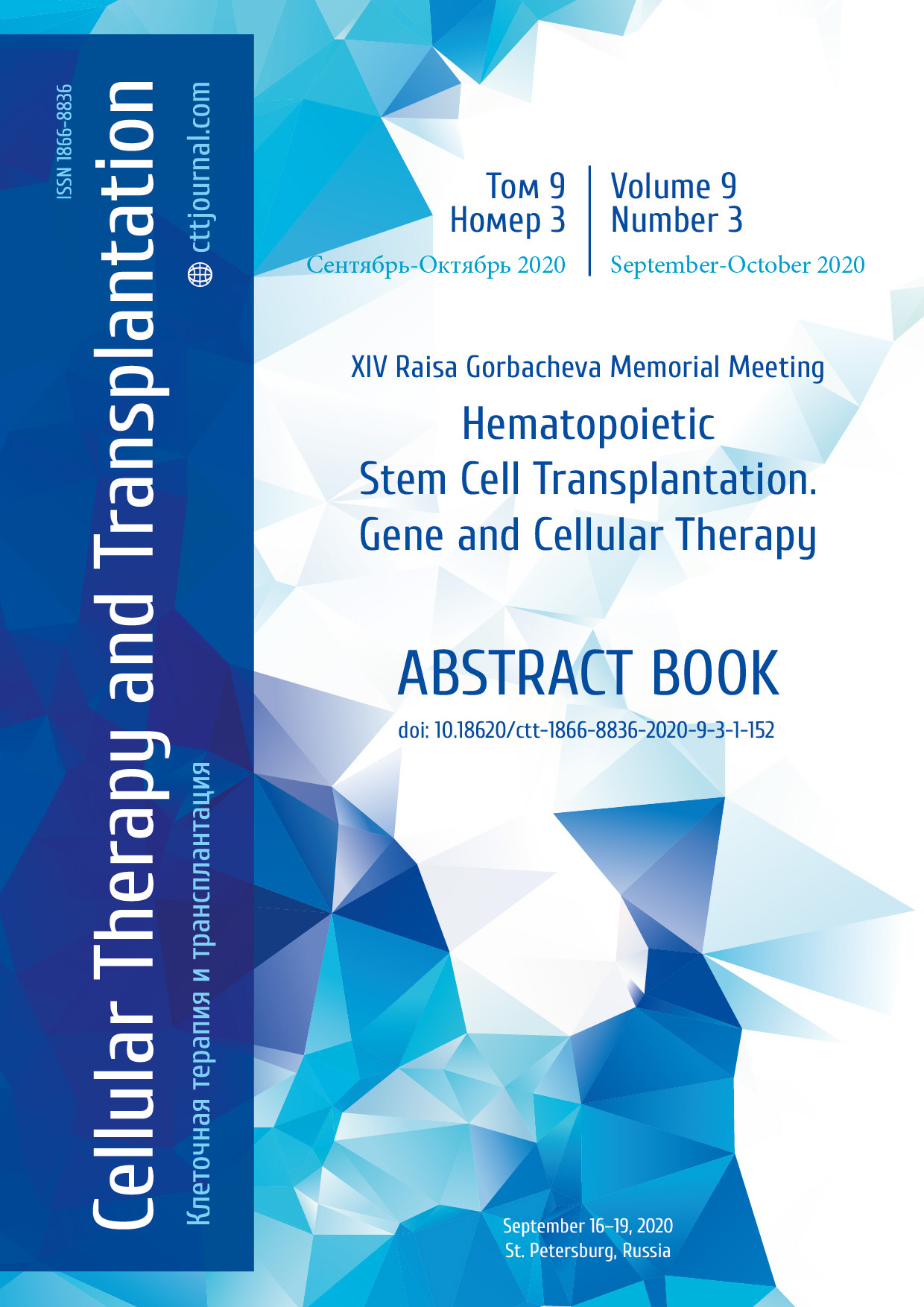AL-05. Comparison of different-intensity conditioning regimen prior to allogeneic stem cell transplantation in infant acute myeloid leukemia
Zhemal Z. Rakhmanova, Olesya V. Paina, Polina V. Kozhokar, Anastasiya S. Frolova, Liubov A. Tsvetkova, Kirill A. Ekushov, Elena V. Babenko, Tatyana L. Gindina, Aleksandr L. Alyanskiy, Ildar M. Barkhatov, Elena V. Semenova, Ludmila S. Zubarovskaya
RM Gorbacheva Research Institute of Pediatric Oncology, Hematology and Transplantation, Pavlov University, St. Petersburg, Russia
Contact: Dr. Zhemal Z. Rakhmanova, e-mail: rakhmanovazhemal@gmail.com
Summary
Background
The infant (inborn) AML diagnosed in children aged 0-2 years is different in prognosis and treatment strategy. Allogeneic hematopoietic stem cell transplantation (allo-HSCT) is a potentially curative option for these patients. However, its indications are still under discussion due to the high risk of transplant-related mortality (TRM) which is especially associated with myeloablative conditioning (MAC). Reduced-intensity conditioning (RIC) is probably an option to avoid severe complications, but the data on RIC efficacy and toxicity in children with infant AML are still scarce. Our aim was to compare conditioning regimens of different intensity (MAC vs RIC) prior to allo-HSCT in infant AML.
Patients and methods
We have analyzed clinical data on 40 children with infant AML who underwent allo-HSCT between 2004 and 2018. Overall, 28 patients (pts) had 1st or 2nd remission (CR), 12 pts had active disease (AD). Median age at the moment of diagnosis was 1 y.o. (2 months to 2 years), at the moment of allo-HCST, 2 y.o. (11 months to 4 y.o.). MAC regimens were based on busulfan (Bu) (10-16 mg/b.w.) in 16 (57%) patients in CR; in 7 cases (58%) with AD; or with treosulfan, in 4 (14%) pts in CR. Melphalan-based RIC was applied for 8 (28%) pts in CR, and in 5 (42%) pts with AD. A busulfan-based regimen (8 mg/b.w.) was used in 1 case (3%) with CR. Prophylaxis of graft-versus-host disease (aGVHD) was as follows: ATG, in 16 (40%), or PTCy, in22 (55%) pts plus CsA, 19 (47%) or tacrolimus ± sirolimus, in 21 pts (53%), depending on the donor type: related, 4 cases (10%); unrelated, 22 (55%); haploidentical, 14 pts (35%).
Results
At the median follow-up of 3.5 years, OS was 70% for the total group. In the cohort of CR pts, after MAC regimen, OS is 80% vs 87% after RIC (p>0.05). In the patients with AD, OS is 42.9% vs 40%, accordingly (p>0.05). RFS in CR pts after MAC was 80% vs 87% after RIC; in the pts with AD, it is 57% vs 40%, accordingly (p>0.05). aGVHD-free/relapse free survival rate (GRFS) in CR after MAC was 36% vs 62% after RIC; in the pts with AD it was 42% vs 40%, accordingly (p>0.05). Cumulative relapse incidence (CRI) in CR pts after MAC is 22% vs 12.5% after RIC; in the pts with AD, it is 54% vs 62%, accordingly (p>0.05). TRM in CR pts after MAC is 22% vs 12.5% after RIC, in the pts with AD, 28% vs 0%, accordingly (p>0.05).
Conclusion
RIC and MAC efficacy is equally efficient in infant AML in terms of OS, RFS, GRFS, CRI and TRM rates. Potentially, RIC may reduce long-term severe side effects of allo-HSCT correlating with intensity-dependent toxic effect of conditioning regimens.
Keywords
Allogeneic hematopoietic stem cell transplantation, infant acute myeloid leukemia, conditioning regimen.


